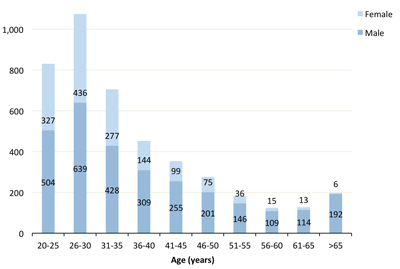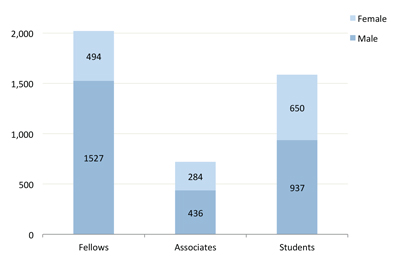
A Crack in the Glass
In August came the welcome news that Maryam Mirzakhani had won the Fields Medal – considered the greatest honour a mathematician can receive.
The 51 winners to date are perhaps the rarest of human beings – not only possessed of innate mathematical talent, but also the resources and circumstances that affords them the opportunity to pursue mathematical studies, and also the determination and personal dedication to reach the very highest level. However, Mirzakhani’s achievement was even more remarkable – she was the first woman to ever receive the award. If that was simply a matter of chance, she was one in 2,251,799,813,685,248.
That sound you hear is a tiny, but significant crack in the glass ceiling.
Internationally, the number of women studying mathematics at university has continued to rise, breaking the sexist myth that mathematics is only the domain of men. Even the suggestion that the top mathematicians were male has plenty of counterexamples, starting from the Greek philosopher Hypatia way back in 350 CE.
In the Australian actuarial profession, only 24% of fellows are female, but that rises to 39% for associates and 41% for students. If the trend continues, and women rise up the ranks, then we should see a gender balance at the top that reflects the number of women entering the profession.
Chart 1 – By Member Type
Chart 2 – By Age

But are we truly entitled to rest on our laurels regarding the diversity of our profession? It’s an important question, and not just a question of political niceties. There is ample evidence that there is no bias in innate talent between men and women, and our profession needs to include the brightest minds if it is to remain relevant and successful. Excluding women is both irrational and inequitable.
I think there are some areas of concern.
First, evidence is emerging that fewer high school students are taking mathematics at the highest level, and this decline has been alarmingly high among females. It is unlikely that we are losing students that were going to pursue an actuarial career. However, the basic maths course for the HSC is fundamentally a course on financial literacy, and as actuaries we should be concerned that the financial literacy of our customers may fall. This is especially important for women who still have disproportionately lower retirement savings than men. Our President Daniel Smith has more to say on this in his column this month.
Second, the number of women taking actuarial courses at Australian universities is still far less than 50%. Recent statistics from UNSW show that only 25% of Co-Op students were female, though this rises to 38% for all actuarial studies. Compared to the 41% female ratio for student members of the Institute, this suggests that the proportion of women taking up actuarial studies is falling.
Third, in considering diversity we also need to think more widely, including such factors as race, sexuality, religion, disability, and age. Recently Tim Soutphommasane, the Australian race discrimination commissioner, asked if there was a bamboo ceiling that exists in the same way that a glass ceiling exists for women [https:// www.humanrights.gov.au/news/speeches/asianisation-australia]? It is a thought provoking question for us as a profession. In particular, whilst only 10% of the Australian population has Asian cultural origins or ancestry, that ratio is likely to be much higher for students entering our profession. Elan Yang considers the bamboo ceiling in his Student Column this month. Soutphommasane notes that there is good reason to be optimistic about the diversity of Australia’s leadership, with many examples like Penny Wong, Ahmed Fahour, and Shemara Wikramanayake. Will this diversity be reflected in our own future leading actuaries?
CPD: Actuaries Institute Members can claim two CPD points for every hour of reading articles on Actuaries Digital.







